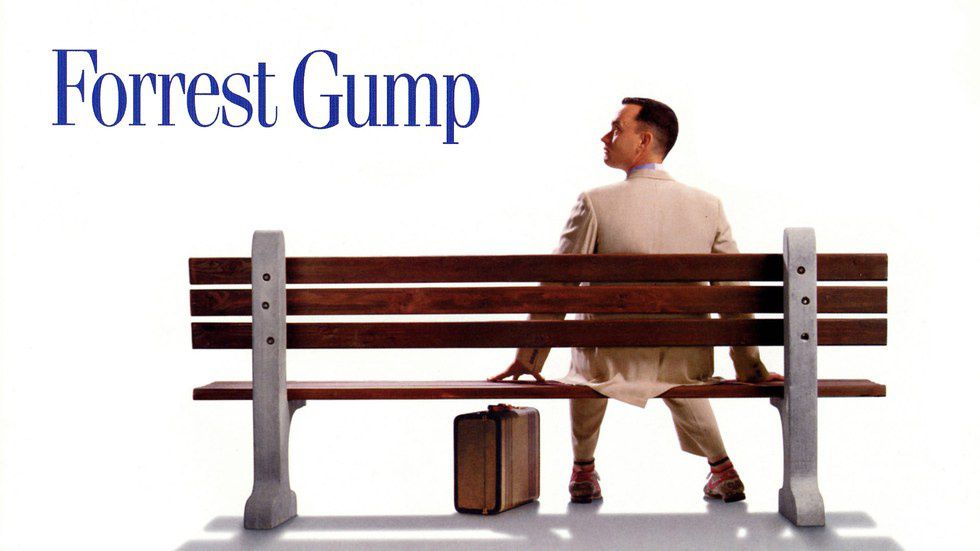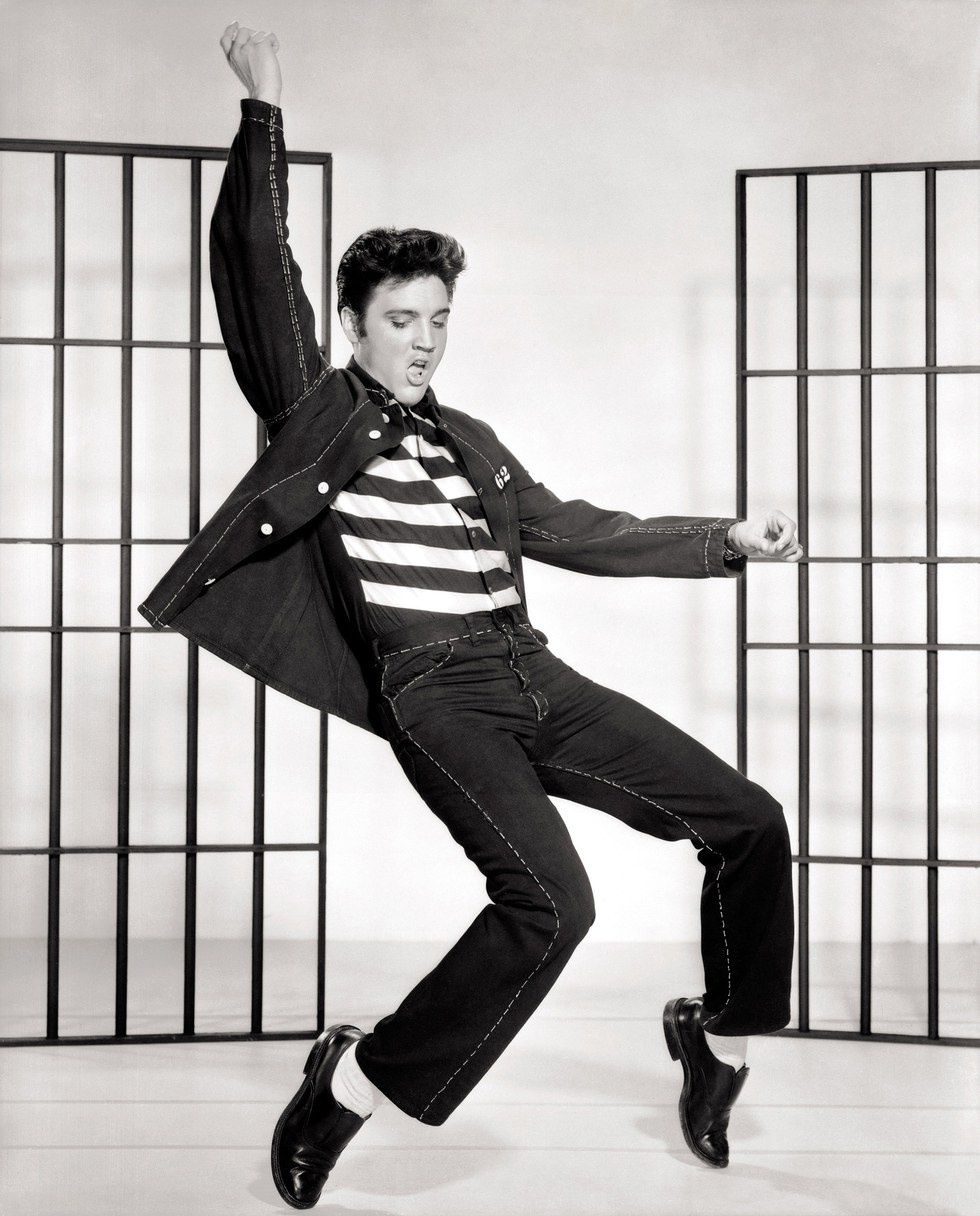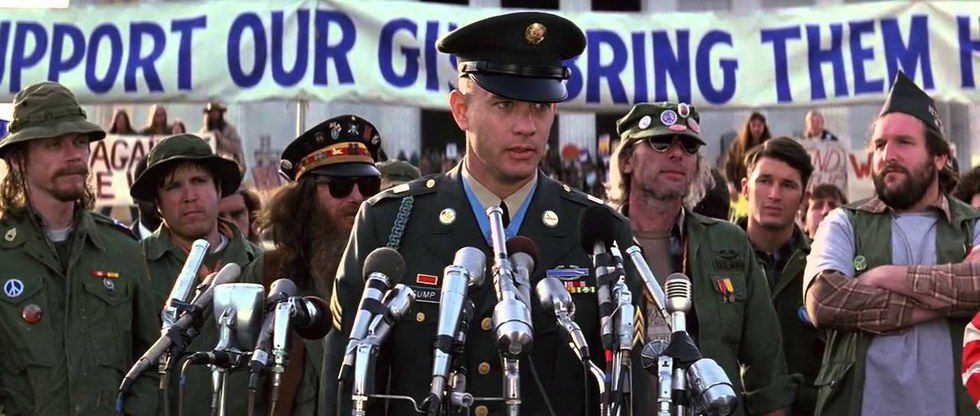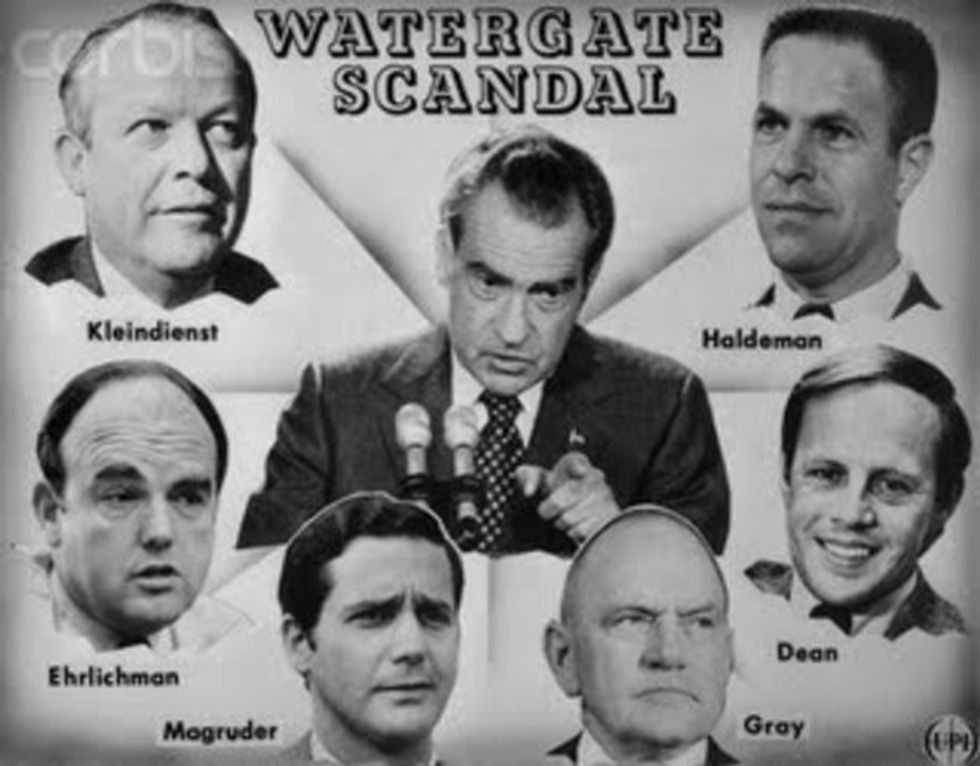It’s now one of the most famous movies of all time: Tom Hanks’ Forrest Gump. Based on the 1986 novel of the same name by Winston Groom, it’s a story about a man named Forrest Gump who manages to somehow find himself part of some of the most important events of the late 20th century, despite his less-than-average IQ. The movie received 13 Academy Award nominations, winning 6 Oscars including Best Picture, Best Actor in a Leading Role and Best Director. With Hanks having won Best Actor only a year prior in the film Philadelphia, he became only the second actor (after Spencer Tracy) to win back-to-back Oscars.
But it’s not just the awards that made this movie so famous. It’s also the inadvertent history lessons that can be learned by following the film’s historical events. From famous people to important historical events, the movie moves through some of the most controversial and moment-defining events of the later 20th century decades.
First off: the people. The first notable figure to enter into this film was Elvis Presley, who comes to stay at the Boarding Home run by Forrest’s family. Forrest (only a child at the time) dances in a weird way while Elvis plays the guitar, supposedly inspiring the musician to try dance moves similar to what Forrest showed him. While in reality this isn’t how Presley learned his dancing style, he is known today as one of the greatest revolutionaries to the Rock and Roll culture. His suggestive dancing styles were unheard of to that day and age, and his style of music changed what the world considered to be Rock and Roll. It can easily be argued that Elvis Presley is one of the most famous musicians of all time.
Second: the events. One of the more hilarious moments of the movie depicts Forrest giving a speech on his feelings about the Vietnam War – only the speaker system malfunctions and no one there actually hears his speech. This is actually a scene based on a real event, where a soldier about to give his opinions on the War is stopped when the speaker cut out on him. Many people believed that this "mistake" was actually made on purpose by government officials to prevent the truth about the war in Vietnam to escape to the rest of the nation.
Another important event depicted in the movie shows Forrest witnessing what is now known as the Watergate Scandal while he stayed in a nearby hotel. While today the term “Watergate” is usually spoken as a synonym to corruption or scandal, the term originally comes from the Watergate Hotel, one of Washington, DC’s most high-end hotels. The scandal started when burglars were arrested after breaking into the Democratic Party’s National Committee offices in June of 1972. After investigation into the break-in, it was discovered that President Nixon had known about the burglary plot and that several members of his Committee to Re-elect the President had been a part of the crime. In an attempt to definitively place Nixon in knowledge of the illegal acts, police demanded that Nixon hand over tapes containing every conversation he had in the Oval Office. After further review, gaps in the tapes were found, prompting a closer look into the President. Soon after the investigation, Nixon resigned from his post as President.
While the events themselves from the movie are based on historical fact, the characters are not. Another of the awards the movie received were for its incredible CGI (computer-generated imagery) work, placing Hanks in clips of important events next to historical figures while still making the footage appear real. The movie itself has been chosen by the Library of Congress to be preserved in the US’s National Film Registry as being “culturally, historically, and aesthetically significant” in 2011. There are many other events that can be debated for their political and emotional symbolism, including the feather seen at the opening and ending of the film. One thing is clear, however.
“Stupid is as stupid does”… and the creator of this film was not stupid.






















